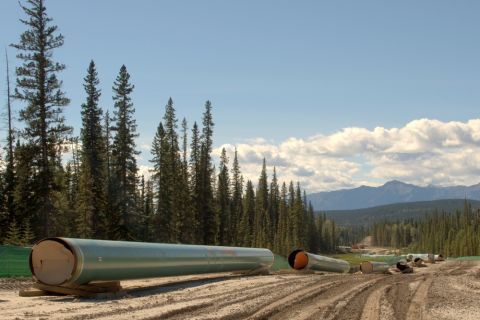There is no question that the energy industry has undergone rapid and frequently unexpected evolution in just the past few years. Less than a decade ago, experts warned that we had less than a 10-year supply of natural gas left. The US was on the verge of a nuclear renaissance. Clean coal was touted as the answer to air pollution, particularly ozone problems. And both the average person and the average politician equated any discussion of energy or national energy policy to the price that was paid at the gasoline pump.
Today, we have recoverable natural gas supplies that could take us into the next century; the US nuclear renaissance has largely stalled; and thanks in part to the 24/7 news media, Internet bloggers, filmmakers, and minor celebrities drawing public attention to energy issues, energy industry terms such as “fracing,” “smart grid,” and “green power” have become household words. All within a few short years, a handful of game-changing events has completely reshaped the energy industry, and with it, the public and governmental responses to energy-related issues have been dramatically altered.
Shale gas revolution
Far and away the most significant game-changer in US energy markets has been the shale gas revolution. Once thought to be nearly exhausted, cheap, abundant supplies of domestic natural gas are now readily accessible through a combination of the relatively new horizontal drilling technique and the long-standing and proven technique of hydraulic fracturing. With the exception of the Bakken shale in the Dakota region, the major US shale plays fortuitously align with existing natural gas pipeline infrastructure, making it easy to get this resource to market. Driven by a combination of low prices and increased environmental regulations affecting coal-fired generation, US energy companies are phasing out coal-fired generation – including both newbuilds and retrofits – faster than anticipated.
The shale gas revolution also has been a contributing factor in the stall of the nuclear renaissance in the US, with a much greater impact than the safety concerns stemming from the Fukushima nuclear disaster, newbuild licensing issues, or the lack of a comprehensive waste disposal policy. The abundance of domestic gas supplies also has had a significant impact on the deployment of renewable resources, which face funding uncertainties.
As recently as five years ago, some industry experts discounted shale gas as an unattractive energy option because, among other things, it was believed that production would require too much water. Water is an issue, but it turns out that the problem is more one of water quality than water quantity. Shale gas production is less water-intensive than the production of coal or nuclear energy and represents only a small fraction of municipal and industrial water uses. And the water quality issues, although these have attracted widespread media interest, are proving manageable as long as industry and regulators work together and not against each other.
Resurgence of western oil
From the oil sands in Canada and the tight oil found in the US from the Dakotas down through Texas all the way to the presalt of Brazil, discovery and recovery of conventional and unconventional oil sources is a second important game-changer that is having a profound impact on the global energy scene. This new oil axis is not the result of any policy shift; rather, it is driven by market forces and technological developments, most notably the same horizontal drilling techniques and increased use of hydraulic fracturing that have been the main drivers in the shale gas boom. As a result, the US is now poised to retake the position it has not held since the 1950s and 1960s as the world leader in oil production, and Brazil is on track to overtake Venezuela in terms of output in the near future.
Emergence of BRIC countries
The role of emerging markets in the global energy industry is a huge story whose impact has yet to be appreciated. Substantial capacity builds in these countries and elsewhere in the developing world over the next 10 to 15 years for all fuel sources will alter global markets. This will, of course, impact demand and price of resources, but it also will affect global climate policies.
Brazil, Russia, India, and China – the BRIC countries – are expected to be both major exporters and consumers. They also will bring a lot of renewable technology development to scale. As the US becomes more energy self-sufficient at the same time that demand increases from these regions, there will be a shift in energy exports, especially in the Middle East.
Brazil will develop its oil reserves. Russia will continue to export gas, although its continued stranglehold on European markets is up in the air as those countries begin to switch to alternative energy sources and seek other sources of natural gas supply. India will be an enormous consumer, with growth potentially surpassing China.
In 2009, China overtook the US as the No. 1 consumer of energy, and within the next decade, China will almost certainly become the world’s largest economy. Within the next 15 years, China will add generation capacity equivalent to the entire existing US generation fleet. China will also become the global leader in nuclear energy. China is planning to build more than 20 reactors by 2020, while the US is presently building only four new nuclear reactors, Germany is shutting down its nuclear program entirely, and Japan’s nuclear industry faces uncertainty.
Climate change
Climate change remains another potentially game-changing issue globally. In the US, cap and trade, the carbon tax, and clean energy standards are all dead-on-arrival, at least under the current political stalemate. Although a wide majority of Americans believe in climate change, the more immediate, tangible, and personal concern over jobs surpasses the concern over the climate. However, more broadly, people in the US are beginning to understand that soot and mercury kill and that long-term survival depends on finding a near-term solution. We are now witnessing changing weather patterns, causing more frequent disruption of food supplies along with other impacts on economic activity and well-being. But at the same time, global warming and the melting polar ice cap are creating an opportunity to recover resources previously thought to be inaccessible, further complicating efforts to resolve this problem.
Iran
Iran is a game-changer with its nuclear ambitions, which are bringing that nation to the brink of crisis in the international community. A nuclear-armed Iran would alter the balance of power in the Persian Gulf region, with major implications for the global oil market. Iran would be positioned to assert dominance over the flow of oil throughout the Persian Gulf, creating insecurity for the region and for world oil supplies.
Water
Finally, one of the biggest global game-changers for the 21st century is the relationship between energy production and the availability of water. As regions experience water distress, this will have a dramatic impact on our industry. This has been playing out in certain regions of the US in connection with shale gas and with competition for water in interstate river basins and federal reservoirs. This issue promises to be far more acute in areas of the globe where the water resources are already severely stressed by a growing human population but where there is also a tremendous and rapidly growing demand for energy resources or the opportunity to exploit resources for economic gain.
Recommended Reading
US Refiners to Face Tighter Heavy Spreads this Summer TPH
2024-04-22 - Tudor, Pickering, Holt and Co. (TPH) expects fairly tight heavy crude discounts in the U.S. this summer and beyond owing to lower imports of Canadian, Mexican and Venezuelan crudes.
Imperial Expects TMX to Tighten Differentials, Raise Heavy Crude Prices
2024-02-06 - Imperial Oil expects the completion of the Trans Mountain Pipeline expansion to tighten WCS and WTI light and heavy oil differentials and boost its access to more lucrative markets in 2024.
Oil Dips as Demand Outlook Remains Uncertain
2024-02-20 - Oil prices fell on Feb. 20 with an uncertain outlook for global demand knocking value off crude futures contracts.
US Leads Global Oil Production for Sixth Straight Year-EIA
2024-03-11 - The Energy Information Administration says it is unlikely that the record will be broken by another country in the near term.
US Oil Stockpiles Surge as Prices Dip, Production Remains Elevated
2024-02-14 - EIA reported crude oil stocks increased by 12.8 MMbbl as February began, far outstripping expectations.



